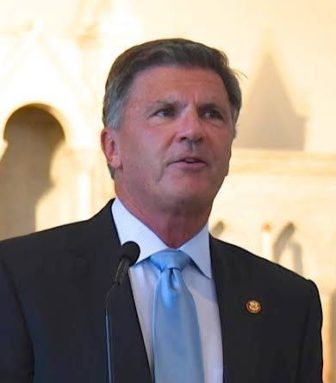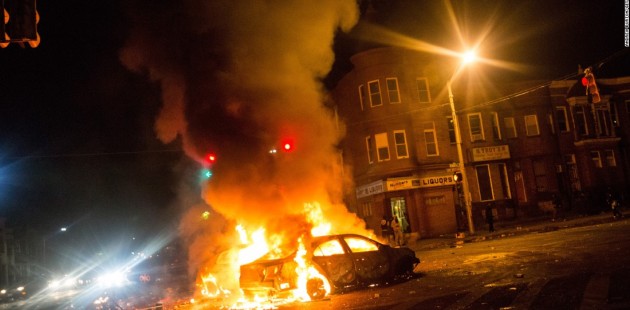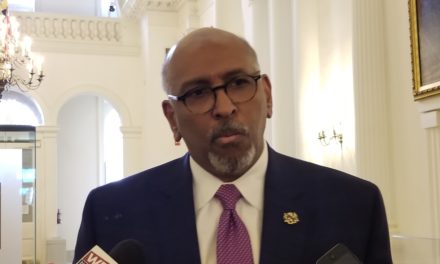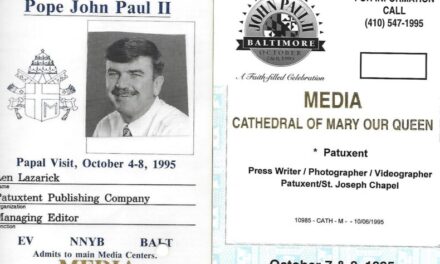By Bob Ehrlich and Jim Pettit
For MarylandReporter.com

Former Gov. Bob Ehrlich in a public appearance last fall.
Over a year has passed since Baltimore erupted in violent protests following the death of Freddie Gray, and predictably, the respective political parties propose vastly different remedies for what ails “Charm City.”
Progressives (those political actors formerly known as “liberals”) seek to double down on the status quo. These folks focus on the need for increased social spending—and ever more government. On the other side of the aisle, many conservatives view the plight of Freddie Gray as one of welfare state (and, possibly, law enforcement) failure.
Without doubt, America’s leading progressives believe expansive government is the answer. Democratic front-runner Hillary Clinton, in a recent Maryland campaign stop, promised to direct “hundreds of billions” of dollars in new investments in urban America. President Obama, in a post-riot press conference last year, complained that desperately needed “mass investments” for inner city revival would never materialize in a Republican Congress. Sen. Bernie Sanders, for his part, labeled Mr. Gray’s neighborhood a “third world country” a few months ago. (How ironic that Mr. Sanders’ voting record helped make it so).
Always calling for more ‘investment’
The common denominator for this crowd is more “investment”; always more “investment”; never enough “investment.” Note that the left co-opted this capitalist term some time ago. It implies that every taxpayer dime spent in Baltimore and elsewhere magically yields a measurable return. A case in point is the proposed Baltimore $3 billion subway line Governor Larry Hogan terminated last summer over cost concerns. In a recent Baltimore campaign stop, local transportation expert Clinton took issue with the decision – to widespread acclaim. Not surprisingly, Ms. Clinton’s mass transit plan is all about spending money where the votes are; not so much for where the efficiencies lie.
Recall that it has long been standard practice for Maryland politicians to steer local aid to Baltimore City. The vast majority of this money goes to public schools where over $900 million, or approximately $15,000 per student is now spent. This per student amount is almost always the highest among Maryland’s 24 subdivisions.
Education spending hasn’t produced results
Unfortunately, this money pit continues to reward failure. Baltimore City’s public schools produce the lowest SAT scores of any Maryland subdivision. More students drop out of high school here than anywhere else statewide. And the public school system hires the least number of “highly qualified teachers.” It has been a perennial fight to get air conditioners installed in classrooms. And students at nearly 100 city schools continue to use bottled water almost ten years after lead was discovered in their drinking fountains.
Such dysfunction is by now familiar to all of us. But not to worry, the federal government has come to the rescue–with a grant. The U.S. Department of Education will now fund social workers and psychologists to provide therapy sessions to students believed to be traumatized by last year’s riots. This new program will allegedly help our students recover from “a violent event in which the learning environment has been disrupted.” If only periodic street unrest was the dominant cause of so much educational failure!
The plight of our public schools is only one of many problems plaguing Baltimore. The dysfunctions are familiar – and ever present: too many pregnant teenagers, too many sick babies, too many fatherless children, too many single income households, too many high school dropouts, too many welfare dependents, too few manufacturing jobs, too much drug culture, too much gang violence, too little hope. Government failures encourage these trends at worst; at best, hyper-expensive government solutions do little to fix them.
Legacy of mass arrests
One issue unique in Baltimore’s recent history is its legacy of mass arrests—that horrific political policy foisted on the police and the African American citizens of Baltimore ten years ago. Recall this was not DWB (“Driving While Black”). Rather, it was BWB (“Breathing While Black”). Thousands of innocent people rounded up and placed in custody—and all to get those all-important public safety stats looking healthier for campaign consumption. Sadly, said policy resulted in approximately 1/6th of the population of Baltimore placed under arrest—in one year! The legacy of such negligence rings clear: for young men like Freddie Gray, career choices often mean whether or not to flee from the police.
No discussion about Baltimore is complete without citing its self-inflicted tax burden. Consider that its property and income taxes are the highest statewide. Added to this is an onerous capital equipment levy on business – twice that of other Maryland subdivisions that impose the tax. The predictable result: Baltimore is America’s largest city without a Fortune 500 company.
A radically different approach to a city on the brink is desperately needed. Anything less and the “post-Freddie Gray era” will look remarkably similar to the status quo – an unacceptable proposition for those of us who grew up in and around this once great American city.
Bob Ehrlich is the former governor of Maryland and Jim Pettit is a political consultant.







It appears from this article that the author would have us bomb Baltimore off the face of the earth to solve this problem. Most problems go through many phases before a solid conclusion.
A totally predictable piece from a governor who spent his one term punishing his enemies and has little of value to add to the conversation.
we see symptoms and not the the issues. the issues are much more complex and simple at the same time. it is about understanding economics as well as respect for and willing to work. it IS about understanding that the world has changed and continues to change– that the reference to manufacturing jobs is an old reference of oil and grease and dungarees, and continuance of another round of old cycles. that we all must understand that old cronyism doesnt work– that all— new and old — should be welcomed to meet and overcome the challenges of the present and future. yes, we must produce – continue to produce- and be paid for what we produce. it is about respect for work and people who work- not those who sit around, be paid, and do old things calling them new names, or do nothing at all. otherwise, no matter who ‘says’ what, or continues doing the same things, there will be no advancement and the same symptoms of the issues will continue to manifest.
Its what will always ail Baltimore – dumbocrats
This is an awfully simplistic, sometimes silly, mostly hackneyed Conservative Playbook, commentary. It ignores (or impliedly disclaims any responsibility for), 100 years of economic and societal trends that have driven the human experience in Baltimore. Investment in inner city Baltimore can relieve human suffering (and some does), but it also can plant seeds for improvement (and some does). Jobs are not a short walk away. Prison records, even for nonviolent crime, are dis qualifiers for decent jobs. Improved access to employment, which can take many forms, would help enormously. Pulling subway funding is a long term citywide transportation system choice, but it favors a short term solution with a price tag out of reach for many inner city residents of Baltimore. More police funding and better police/neighborhood engagement would help police understand those they protect and not feel like they are in constant danger.
Or, you can view the recovery of inner city Baltimore as a waste of time and money. (Just don’t say you’re a representative of the people, if you do.)